A time trial is bike racing at its simplest – just you, the bike and the clock. But don’t confuse simple with easy.
There are no wheels to follow, no pack to hide in, and it hurts from the moment the starter shouts “Go!” to the moment you cross the line. So let's look at how to get better at time trialling.
The TT offers a different kind of satisfaction from bunch racing. Nobody sits on your wheel then jumps out to beat you in the last 100m. Barring a mechanical or a sudden change in the wind, the best rider wins, but more than that it’s a pure test of your ability to ride a bike fast.
Finish your first time trial and, when you’ve wiped the sweat from your eyes, most riders will have the same thought: "I want to go faster!"
Learn to hide from the wind
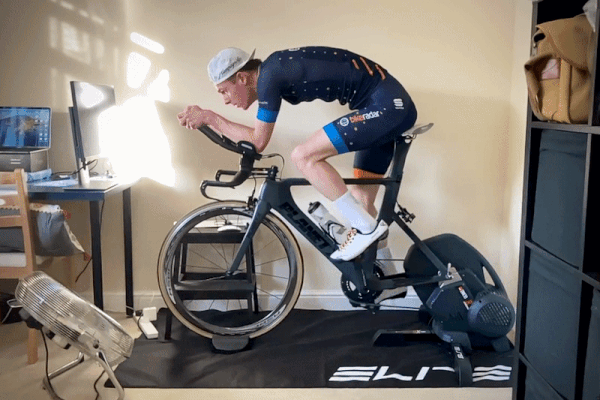
All the bling kit in the world won’t make you go faster if your body acts like a giant air brake.
“The rider makes up over 80 per cent of the frontal area,” says Chris Boardman, arguably Britain’s best ever TT rider, “and at any reasonable speed 90 per cent of the energy you produce goes into overcoming wind resistance.” Cut that resistance and you’ll go faster.
Keen riders can head for a wind tunnel for guidance, or you can put your TT or road bike on a turbo trainer or set of rollers in front of a full-length mirror to tweak your bike position at home.
“Making your silhouette smaller is a crude but fairly accurate way to reduce drag,” says Boardman. “TT bars bring your arms in and round off your shoulders. Dropping your body also has a significant impact for every centimetre lower you go.”
But, he says, don’t have too great a drop to the bar. “If the front of the bike is too low you have to stick your head up to see where you’re going, which makes the silhouette bigger.”
Loosen up

A full-blown time-trial bike, or even a modified road bike with clip-on aero bars, will have a more extreme riding position than most roadies are used to.
Riding with your head down, backside in the air and elbows close together doesn’t look comfortable, and to some extent it isn’t. However, a rider can use stretches or yoga to improve their flexibility. This would help you stay comfortable and powerful in your TT pose.
Physical activity expert, Professor Greg Whyte, says stretching the backside (glutes) and hips (adductors) is particularly effective.
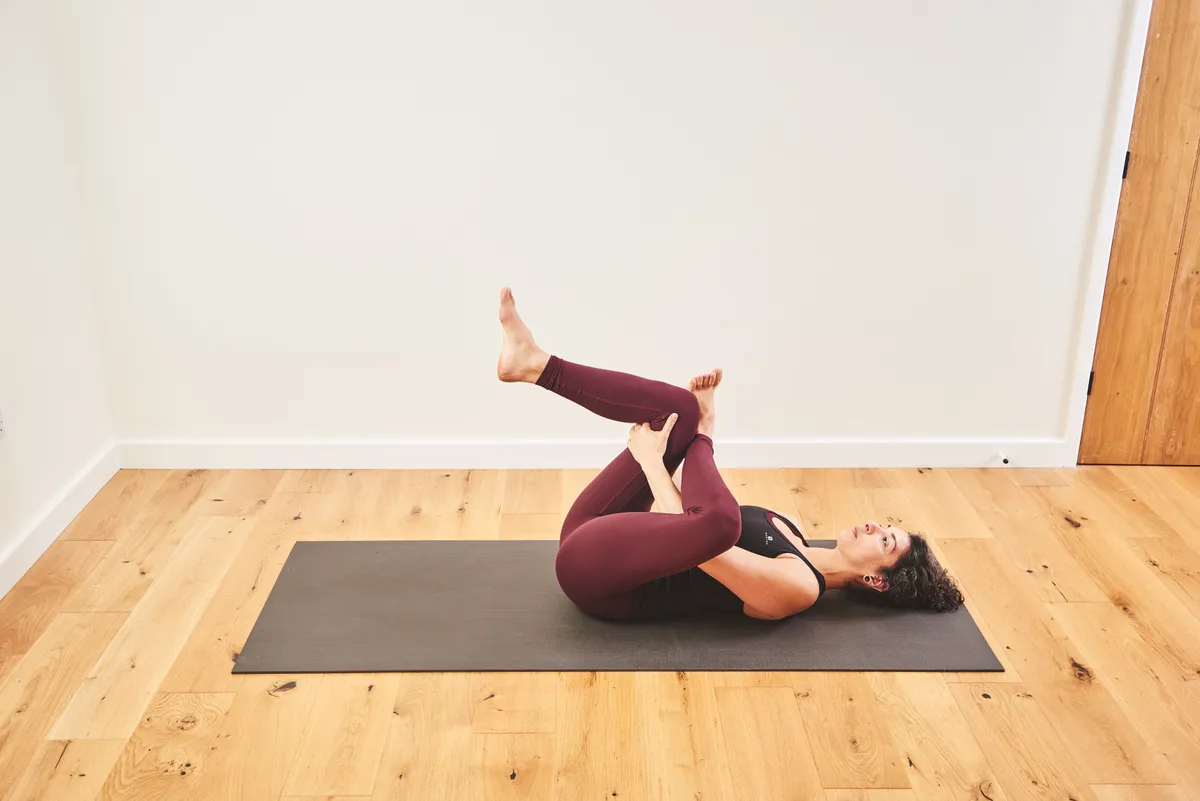
“Lie on your back on the floor with both legs bent,” he says. “Place the ankle of one leg on the knee of the other. Place your hands behind the bent knee and pull it in towards your chest. Hold for 20 to 30 seconds. Repeat with the other leg.”
According to Professor Simon Jobson, Dean of the Faculty of Health and Wellbeing at the University of Winchester, “the big thing is habituation to the position”. He recommends training regularly on your TT bike so it doesn’t come as a shock on race day.
TT gear will help, but you don't need to spend loads
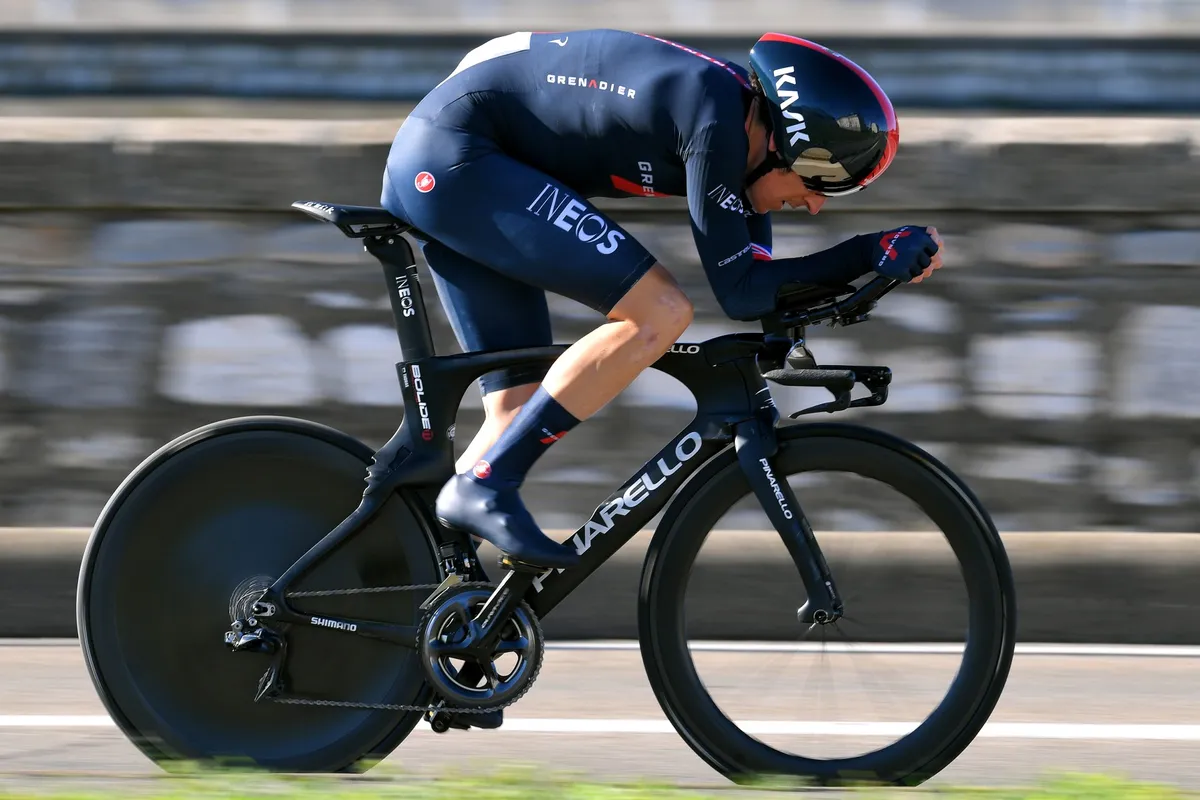
The first job of go-faster frames or tri-bars is to get you out of the wind before they cut through the air. If you plan to use the same bike for your road riding and time-trialling, pay attention to the head tube length, says Boardman.
“A shorter head tube will make finding an aerodynamic position easier because it makes the front end of the bike lower and so helps you get out of the wind.”
You don’t have to spend a lot. Lowering the front of the bike (which might be as simple as flipping the stem to drop the handlebar position), fitting some tri-bars (from as little as £30) and buying an aero helmet (around £100) could make a big difference to your speed.
These changes offer the most bang for your aero buck. Boardman estimates a TT helmet alone saves the rider 10 to 15 watts of power at race speeds.
From here, you can start to add aero socks, skin suits, overshoes, aero drinks bottles, and even deep-section wheels and a full-fat time trial bike.
But before splashing loads of cash, remember that the best value aero upgrade is body position.
What is a time trial?
Time trialling is competitive cycling at its simplest. It’s trying to get from point A to point B in the least amount of time.
Plenty of us do it naturally: whether it’s trying to knock a couple of minutes off the commute to work or increasing our average speed on a weekend ride.
Going faster under your own power is very motivating, which is why organised time trials are a popular form of bike racing. It’s mostly you versus the clock rather than against other riders in close quarters, as in a mass start race.
Time trials are called the ‘race of truth’ for good reason. There’s no hiding in the bunch before the sprint, you have to work for your speed every inch of the way.
Time trials happen all around the globe, either on their own or as part of stage races, but the UK is definitely top when it comes to having a TT “scene”.
Every week there are dozens of time trials all over the country with distances ranging from five miles to 24 hours.
Time trials remain popular because they are a very accessible form of racing – you don’t need any particular equipment or skills, just a bike and the ability to ride it.
Courses are usually on open roads although in recent years there has been a rise in closed road/circuit events, which are attractive especially to newcomers from a safety point of view.
The most common question potential newcomers ask is “Am I fast enough to ride the local 10 miler?”. The answer is ‘yes’, no matter how fast you are.
In our experience, no one else will be particularly bothered by your time. It’s their time that will concern them, not yours.
The easiest way to get into time trialling is to contact your local club and see if it runs TT events, or find an event on the Cycling Time Trials website.
Many clubs allow newcomers to do a few races before asking them to join, but club membership is usually cheap or you can pay a guest fee on the day.
Work on your TT-specific fitness
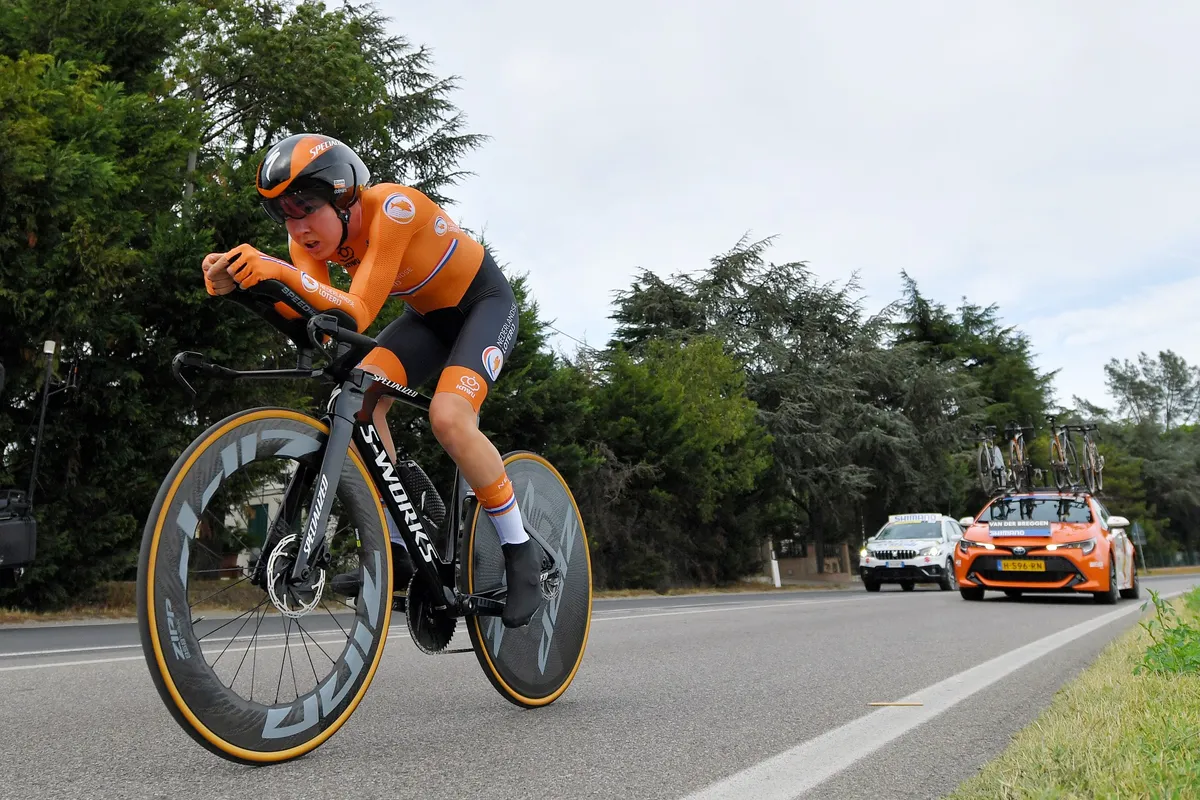
We spoke to Professor Greg Whyte, who coached Tony Gibb to a silver medal in the 2008 National 10-mile TT Championship, and has coached and trained a number of celebrities in Comic Relief challenges. We asked Professor White to take us through the five key sessions he uses with his athletes to transform them from keen cyclists into TT speed merchants.
Want to know more? Read our in-depth guide to training zones, including how to set and use your heart rate and power zones.
Session one: tolerate this
How
- Warm-up: 15 mins including 5x 30-second sprints and 2 mins flat out
- Workout: 2x (6x 30 seconds) flat-out with 30 seconds recovery between intervals. Five minutes easy spinning between the two sets. Follow with 5x 1-minute holding time trial pace with 1-minute recovery between efforts
- Warm down: 10 minutes
Why
- "These sessions improve your handling of lactic acid," says Whyte. "Fatigue means you will slow down but these sessions are as much about psychology as physiology, so concentrate!”
When
- Twice a week for three weeks prior to TT
Session two: strength builder
How
- Three hours of riding in the hills including: 10x 1-minute seated and over-geared, 3x 2 minutes out-of-saddle on a steep hill and 1x 5 minutes ascending fast
Why
- "Cycling-specific strength is a key performance determinant," says Whyte. "For the novice with limited strength, I would suggest gym-based strength work initially before tackling these strength sessions to avoid injury. This session does what it says on the tin – you should focus on working against a very hard resistance over long periods. It should be hard, but if it hurts, take a break."
When
- Twice a week pre-season
Session three: maximum attack
How
- Warm-up: 15 minutes including 10x 10-second sprints
- Workout: 5x 3 minutes very hard riding, 5 minutes recovery between intervals
- Warm down: 15 minutes
Why
- "Generally believed to be the most important determinant of endurance performance, VO2 max (the highest rate of oxygen consumption during exhaustive exercise) is genetically set and takes a great deal of work to improve," says Whyte. "Focus on working as hard as possible for the entire three-minute effort.”
When
- Twice a week pre- and early-season
Session four: peak practice
How
- Warm-up: 15 minutes including 5x 15-second sprints
- Workout: 3x (6x 10 seconds) at max power, 2 minutes recovery between efforts, 5 minutes rest between sets
- Warm down: 15 minutes
Why
- "The power you can sustain over long periods will be underpinned by your peak power," says Whyte. "During these sessions you are trying to apply as much force as you can as fast as possible. You don’t need a heart rate monitor, just go as hard as you possibly can.”
When
- Once a week for three weeks prior to TT
Session five: spin to win
How – on rollers or turbo…
- Warm-up: 10 minutes including five spin-ups to max cadence
- Workout: 10x 1-minute efforts with 1-minute recovery (5x 1-minute 120rpm, 3x 1-min increasing to 140rpm+ for final 10 seconds, 1x 1-minute increasing to 140rpm+ for final 15 seconds and 1x 1-minute increasing to 140rpm+ for final 20 seconds)
- Warm down: 10mins
Why
- "Cadence is crucial in producing optimal power in terms of both economy at sub-maximal speeds and peak power at maximum. These sessions focus on your ability to develop a fast cadence as economically as possible," says Whyte.
When
- Once or twice a week for two weeks prior to TT
Fuel your fire properly

Some cyclists use carb-loading for an event as an excuse to fill their faces.
“For races like 10- and 25-mile time-trials,” says Tim Lawson of Secret Training, and one of the founders of Science in Sport, “eat a carb-rich meal the night before, such as a rice or pasta dish, but don’t overdo it – 200g should be enough. Avoid foods high in fat.”
In the morning, the emphasis should again be on carbohydrates. “Toast and jam with a high fruit content is good,” says Lawson. “If you prefer cereal, make sure it’s low in fat.”
On the way to the event, sip an energy drink and take up to 200mg of caffeine, Lawson advises. “Continue to drink throughout your warm-up to replace lost energy and take a caffeinated gel when your warm-up has finished.”
Don’t bother with a bottle for a 10- or 25-mile race because time lost drinking outweighs the benefit of taking on more fluid. But do have a recovery drink ready.
Learn some confidence tricks
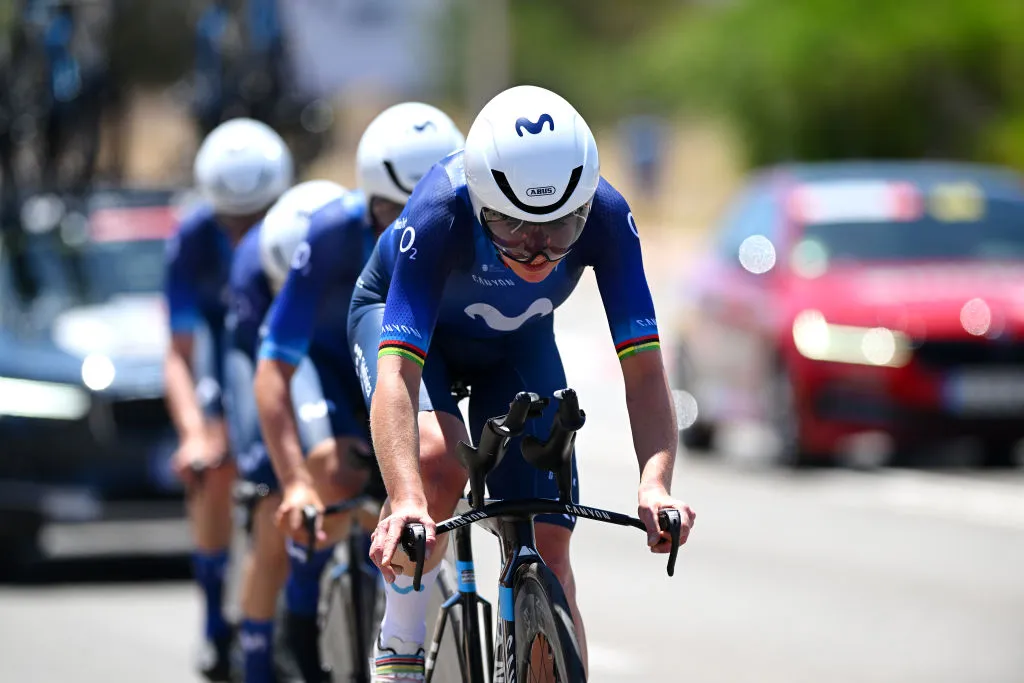
Riding with elbows tucked in and your hands a stretch away from the brakes can be intimidating.
“At first, TT bikes can be tricky in the tuck position, especially if you have disc or deep-rim wheels,” says former pro cyclist Matt Jones, “but the more you ride your TT bike, the more natural it feels and the more confident you will get.”
He advises getting into and out of an aero tuck one arm at a time, in case of a strong gust of wind or hitting a pothole, so you still have control of the bike.
“If you are worried about riding in the aero tuck position, just ride in the position on a turbo at first, then find a quiet road to practise on. Once you feel confident, go and rip up the local TTs.”
Go hard on the hills and into headwinds
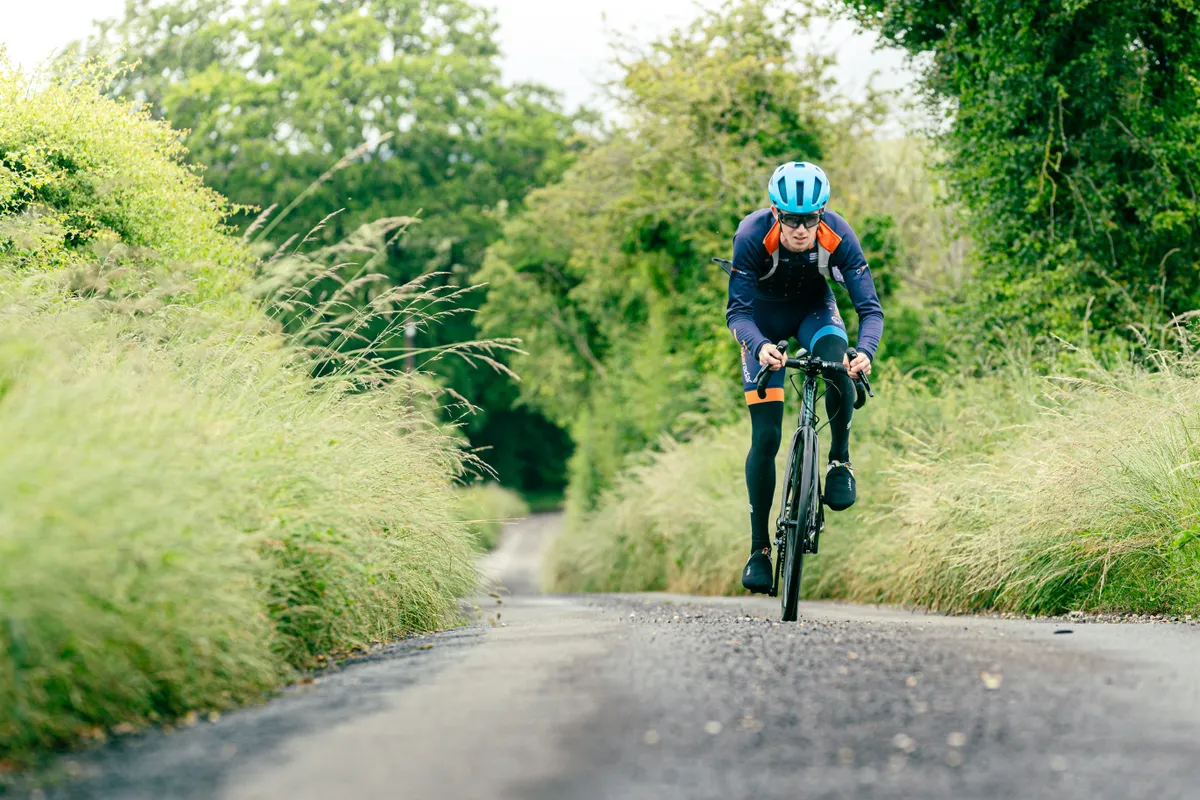
Conventional wisdom is that you ride a TT at a tough but even pace, holding a steady power output throughout. But some research suggests that advice needs to change.
“Going harder on hills or into the wind can be quicker,” says Simon Jobson, “and a power meter can be very valuable.” If you don’t have a power meter or heart rate monitor though, you can learn to pace yourself.
“Practise riding the distance you will be competing over flat-out,” says Greg Whyte. “If your pace drops towards the end, you’ve gone too hard. If you finish feeling fresh, you haven’t tried hard enough. Keep practising until you know what a tough but sustainable effort over that distance feels like."
Make sure you're ready to ride

Arrive at the start without having warmed up adequately and you won’t get the most out of all those hours of training. “Many riders don’t warm up hard enough,” warns Jobson. “Some hard priming efforts trick the body into functioning at a higher level.”
One warm-up strategy that Jobson recommends is riding easily for 15 minutes, then performing 3x 10-second hard efforts with two minutes of recovery in between.
“I wouldn’t put in a maximum effort during the sprints,” he says, “but I would be sprinting. I tend to call them ‘bursts’ rather than sprints. In total, a warm-up should be at least 20 minutes and could be as long as 40.”
Stay relaxed, think fast

You might think that getting psyched up before a race is crucial to putting in a great performance. However, Rob Hayles, a former professional racer and former world champion track rider, would disagree.
“Stay relaxed,” he says. This calm approach applies to the choices that you make before the start, as well as your mental approach to the race.
“Err on the side of caution with your equipment,” says Hayles. “If you have a choice of different depth front wheels and it’s windy, go with the shallower one. If you’re not happy with the bike’s handling, you’ll lose time.”
Hayles adds that it pays not to be too aggressive, even for a short race. “You can go out too fast, even in a 10-miler. Be in control of your effort. Go too hard in a time trial and there’s no chance to recover.”
Don't forget to do a recce beforehand
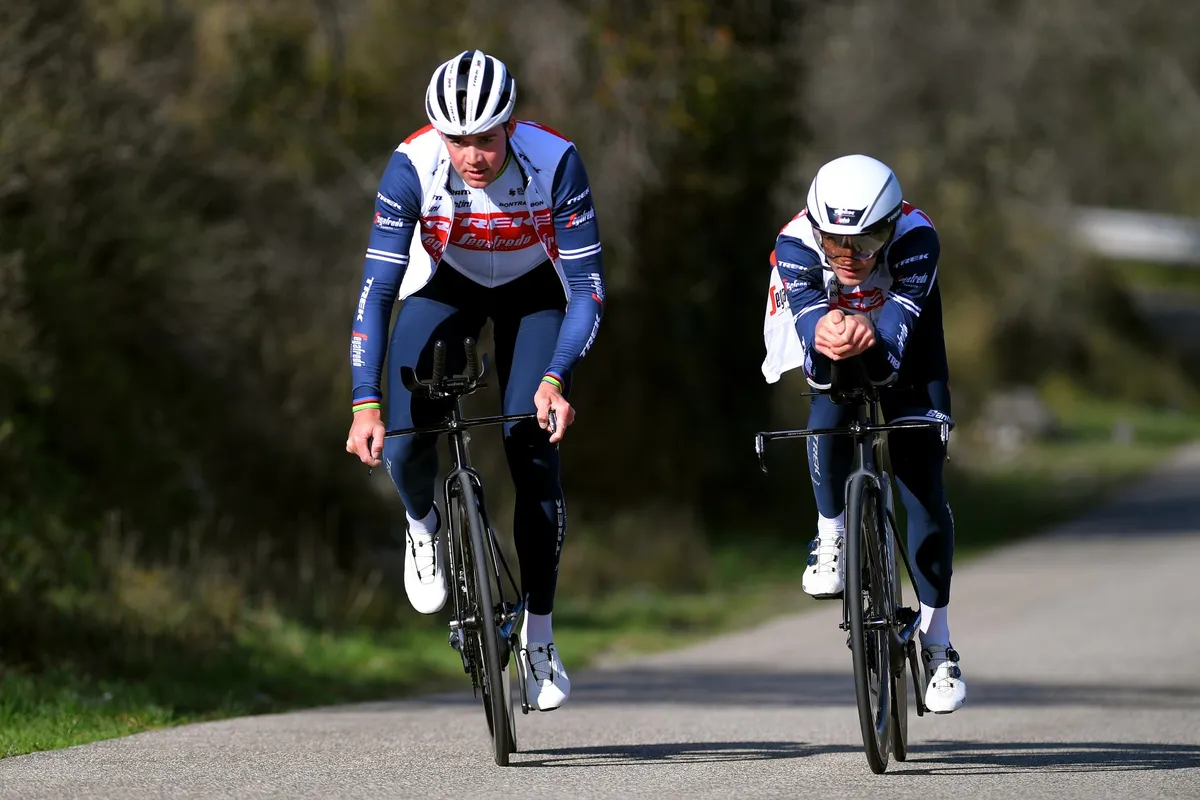
It really helps to know the course beforehand. You’ll be sent the route with your start sheet, which usually arrives at least a few days before the race. If you don’t want to wait until then, enter the course code into a search engine (UK time-trialling’s governing body, the CTT, gives a code for every course) and you’ll soon find a description of the route.
Even on well-marshalled courses, riders sometimes take a wrong turn in the heat of the moment, so on the most basic level, riding or driving the route beforehand means you’ll know where you’re going.
A course recce will also show you where the course is toughest and help you to spot hazards such as potholes in advance, rather than having to react at the last moment.
What do I need for a time trial?
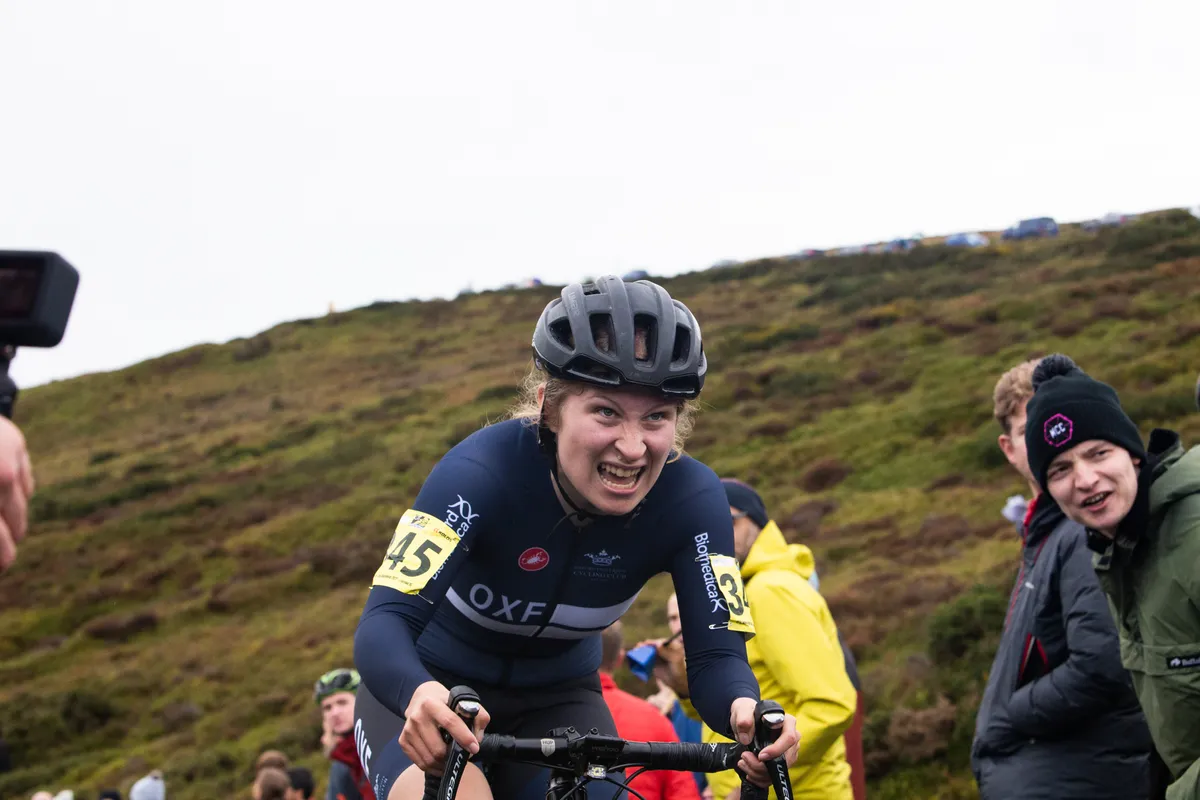
Under CTT rules, a helmet and working front and rear bike lights are obligatory for time trials.
There is even less need for a specialist time trial bike now CTT has mandated that every open time trial must have a road bike category. The aim is to reduce the barrier to entry and increase participation.
Before, road bike riders would be ranked against time trial bike riders, who have a large technological advantage, in the overall standings.
But you can race a road bike against people on similar equipment.
The requirements for the road bike category are as follows:
- Straight or drop handlebars
- No tri bars, aero bars or Spinacci bars
- No disc wheels
- Minimum of 12 spokes each for front and rear wheel
- Maximum wheel rim depth of 90mm
How do I enter a time trial?

Usually entering a time trial is as simple as turning up, paying your entry fee, pinning on a number and setting off at your start time.
The majority of club events, which confusingly are open to all, only accept entry on the day, usually in cash.
Open events tend to offer advance entry online. Some let you enter on the day, but there may be a surcharge.
The best ways to find events near you are the CTT website, and clubs' websites and social media feeds.
On the CTT website, you can narrow down your search to your region if you don't want to travel far afield. It's good training and better for the environment if you ride to and from the race.
Clubs don't always advertise their time trials on the CTT website, so it can be worth looking directly at their website.
